Advertisement
Nutrition plays an important role in controlling this chronic inflammatory skin disease
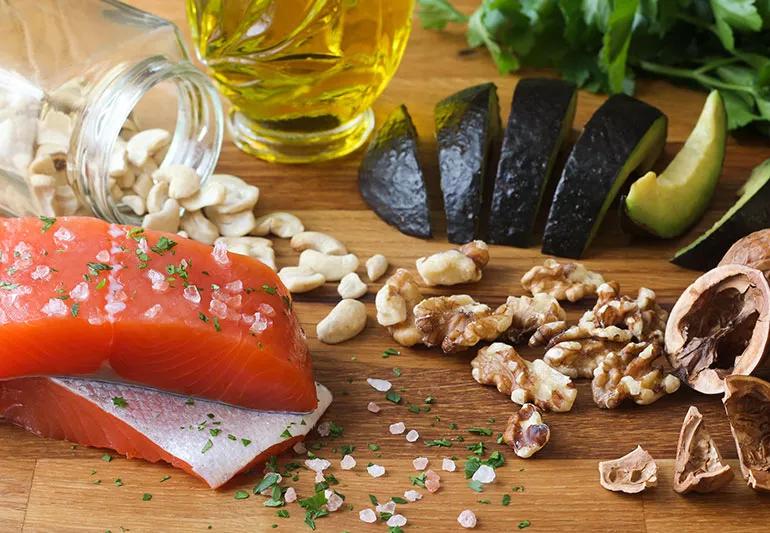
If you have hidradenitis suppurativa (HS), you know just how hard it can be to keep your symptoms under control. And if you’re looking for ways to lessen the likelihood of flare-ups and keep painful skin lesions at bay, you may want to consider altering your diet to focus on anti-inflammatory foods.
Advertisement
Cleveland Clinic is a non-profit academic medical center. Advertising on our site helps support our mission. We do not endorse non-Cleveland Clinic products or services. Policy
Dietitian Devon Peart, RD, MHSc, BASc, explains how your diet can affect your hidradenitis suppurativa, including which foods to embrace and which to avoid in the ongoing quest to keep your symptoms under control.
In a word, yes. Hidradenitis suppurativa, also known as acne inversa, is an inflammatory skin disease, and what you eat (and don’t eat) can contribute to or calm inflammation in your body. Your diet can also have an impact on the severity of your body’s inflammatory response.
“Some foods are inflammatory, meaning they increase inflammation, and some foods are anti-inflammatory, meaning they reduce inflammation,” Peart says. “When you have hidradenitis suppurativa, there is a potential role for nutrition in terms of reducing inflammation — or at least not making it worse — and preventing flare-ups.”
Certain foods are thought to make hidradenitis suppurativa worse. “It’s not yet clear if foods contribute to or cause diseases like HS (and if so, which ones), but food triggers can cause flare-ups or worsen symptoms or severity,” she says.
Everyone’s body is a little different, so there’s no one-size-fits-all answer to what’s best for you. But Peart says some foods are known to be more inflammatory than others, and it’s all about figuring out which ones most affect you.
“As with most conditions, there are individual differences with respect to food sensitivities and what foods might trigger inflammation,” she notes. “By keeping a food journal or diary, you may be able to identify triggers for your flare-ups so that you can minimize or avoid those foods.”
Peart walks us through some of the foods believed to cause hidradenitis suppurativa flare-ups.
Highly processed foods, and foods that have a lot of additives, lead to a less diverse gut flora, which is the “good” bacteria that live in the gut and keep your immune systems healthy. Gut bacteria ferment dietary fibers to make short-chain fatty acids, which play an important role in reducing inflammation.
Bad news, ice cream lovers: Peart says high-fat dairy products can be inflammatory because of their saturated fat content. This includes some of your creamy favorites, like ice cream, butter, whole milk, cheese and heavy cream.
But there’s good news, too. Dairy foods that are lower in fat don’t appear to be inflammatory. And yogurt actually reduces inflammation because of its high probiotic content, which is good for your gut. (Just be sure you’re not reaching for sugary sweet versions. Plain, nonfat yogurt is best.)
Advertisement
By now, we all know that there are plenty of health risks associated with sugar. But if you have hidradenitis suppurativa, here’s another reason to scale way back: Studies show that simple sugars are a common trigger for inflammation and may worsen HS symptoms.
“Sugary foods spike insulin which leads to inflammation, as well as potentially more stored fat and weight gain,” Peart explains.
One study showed that brewer’s yeast — a type of yeast found in beer, bread and a number of other foods — may cause HS flare-ups. That may only be the case in people who are already sensitive to gluten, but if you have hidradenitis suppurativa, you may see relief by avoiding products made with brewer’s yeast.
There are various types of carbs, but refined carbs are those that contain processed (white) flour or sugar. “Refined carbs are calorie-rich and nutrient-poor, like desserts, white bread, rice, pasta, chips, crackers and pretzels,” Peart says. “They have a lot of calories and few nutrients.”
Foods like these increase insulin and affect other factors that can lead your cells to produce too much sebum — an oil your body makes to keep your skin moist. “This can lead to blocked follicles that can trigger acne and hidradenitis suppurativa,” Peart explains.
Alcohol can have all kinds of effects on your body, impacting everything from your liver to your pancreas to your heart. And it can also play a role in your hidradenitis suppurativa.
“Alcohol is known to be inflammatory,” Peart warns. Drinking less or eliminating alcohol entirely may improve your HS symptoms.
Nutrition and inflammatory skin diseases are closely connected. If you have hidradenitis suppurativa, the way you eat can have an impact on whether your symptoms are better or worse.
Peart explains some eating styles and habits that may help your hidradenitis suppurativa.
Peart advises removing certain foods from your diet for a certain period of time — a minimum of two weeks — to see how your HS reacts.
In particular, she suggests, “Try avoiding gluten, brewer’s yeast and alcohol for a trial period to see if your symptoms improve.”
An anti-inflammatory diet is exactly what it sounds like: A diet designed to reduce inflammation in the body. What this means for you, though, is specific to your body and its individual needs, so it’s important to work with a professional.
“A registered dietitian can guide you in planning a diet that is anti-inflammatory and can also help you identify which foods are triggers for symptoms in your individual case,” Peart says. They’ll also make sure you’re still getting all the vitamins and nutrients your body needs.
Certain foods — like fruits, veggies, chicken and fish — seem to improve HS symptoms, likely due to high content of micronutrients such as zinc and B12, Peart says. And there’s one anti-inflammatory eating style in particular, that focuses on all of them.
Known as a healthy diet for your heart, the Mediterranean diet focuses on whole, minimally processed foods, especially those that are plant-based. “This encourages diverse gut bacteria, which is beneficial for health and immunity,” Peart says. “You want to be sure you’re eating fiber- and nutrient-rich foods.” That includes:
Advertisement
Medical professionals don’t yet know whether having diabetes makes a person more prone to developing HS or if having HS can contribute to diabetes — but they’re thought to be related somehow.
“Either way, nutrition choices that help stabilize blood sugars is probably a good precautionary measure and may help manage symptoms of HS,” Peart advises.
That means:
There are some other elements to work into your diet to help get a handle on your HS.
Though more research is still needed, studies show that many people with HS are deficient in vitamin D, Peart says, and the degree of that deficiency is directly related to the severity of their condition. This means that getting enough vitamin D can play a role in how bad your HS symptoms are.
“Vitamin D appears to reduce inflammatory nodules, likely by stimulating the skin’s innate immunity,” Peart explains.
Your body can’t efficiently produce omega-3 fatty acids (or produce them at all), but it needs these unsaturated fatty acids for a variety of health reasons. And omega-3 fatty acids play a role in reducing inflammation, which in turn helps your HS symptoms.
“The best source is fish,” Peart says, “so aim to have oily fish like salmon, trout, mackerel, arctic char or sardines at least twice a week.”
Your hidradenitis suppurativa doesn’t stand alone; it’s related to other things going on in your body, which means that other health conditions can impact your HS symptoms.
If you have hidradenitis suppurativa, talk to your medical provider about the role nutrition plays in your condition. “It’s important for dermatologists and other healthcare providers to be aware of the growing body of evidence concerning nutrition and inflammatory skin diseases, including HS,” Peart says.
Advertisement
Learn more about our editorial process.
Advertisement

A variety of healthy foods can help reduce inflammation and keep other conditions at bay

Reducing inflammation is key when you’re in a flare-up, but so is having a preventive nutritional plan in place when you’re not
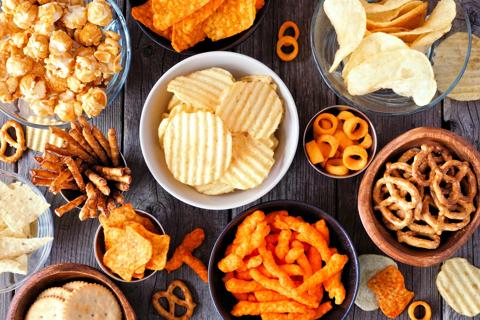
Cut back on foods made with added sugars, trans fats, refined carbs, omega-6 fatty acids and processed meats

A well-balanced diet with anti-inflammatory foods can help reduce flare-ups and severity of psoriasis symptoms
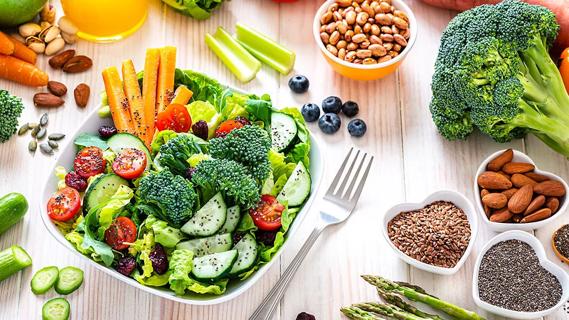
These typically colorful plant-based substances provide various health benefits that help protect you from disease
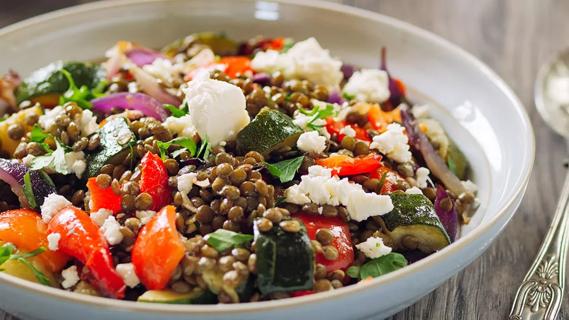
This delicious Mediterranean dish is packed with healthy protein and nutrients

EVOO is full of antioxidants and has anti-inflammatory properties, both of which aid your body in multiple ways
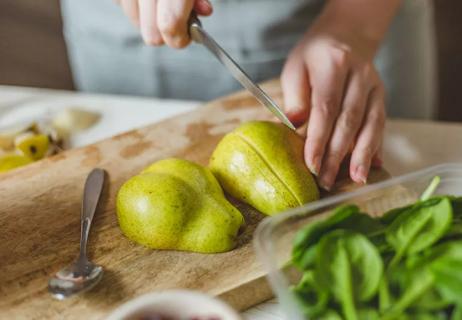
They’re great for your gut, heart and blood sugar and may lower inflammation

Focus on your body’s metabolic set point by eating healthy foods, making exercise a part of your routine and reducing stress

PFAS chemicals may make life easier — but they aren’t always so easy on the human body

While there’s little risk in trying this hair care treatment, there isn’t much science to back up the claims